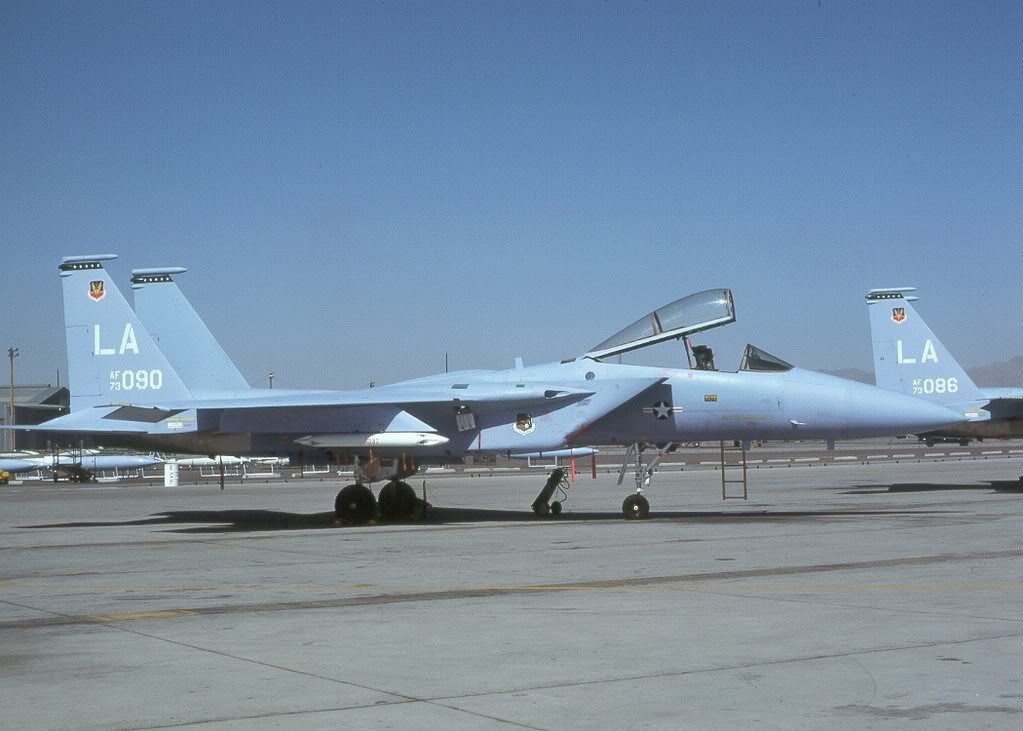
14 November 1974: The very first operational McDonnell Douglas F-15A Eagle air superiority fighters were delivered to the 555th Tactical Training Squadron, 58th Tactical Training Fighter Wing, at Luke Air Force Base, west of Phoenix, Arizona. The acceptance ceremony was presided over by President Gerald R. Ford.
“. . . I am here today to underscore to you and to the world that this great aircraft was constructed by the American people in the pursuit of peace. Our only aim with all of this aircraft’s new maneuverability, speed, and power is the defense of freedom.
“I would rather walk a thousand miles for peace than to have to take a single step for war.
“I am here to congratulate you: the United States Air Force, McDonnell Douglas, Pratt and Whitney, all of the many contractors and workers who participated in this very, very successful effort, as well as the pilots who have so diligently flight-tested the F-15 Eagle. All of you can underline my feeling that we are still pilgrims on this Earth, and there still is a place for pioneers in America today.”
—Gerald R. Ford, Jr., 38th President of the United States of America
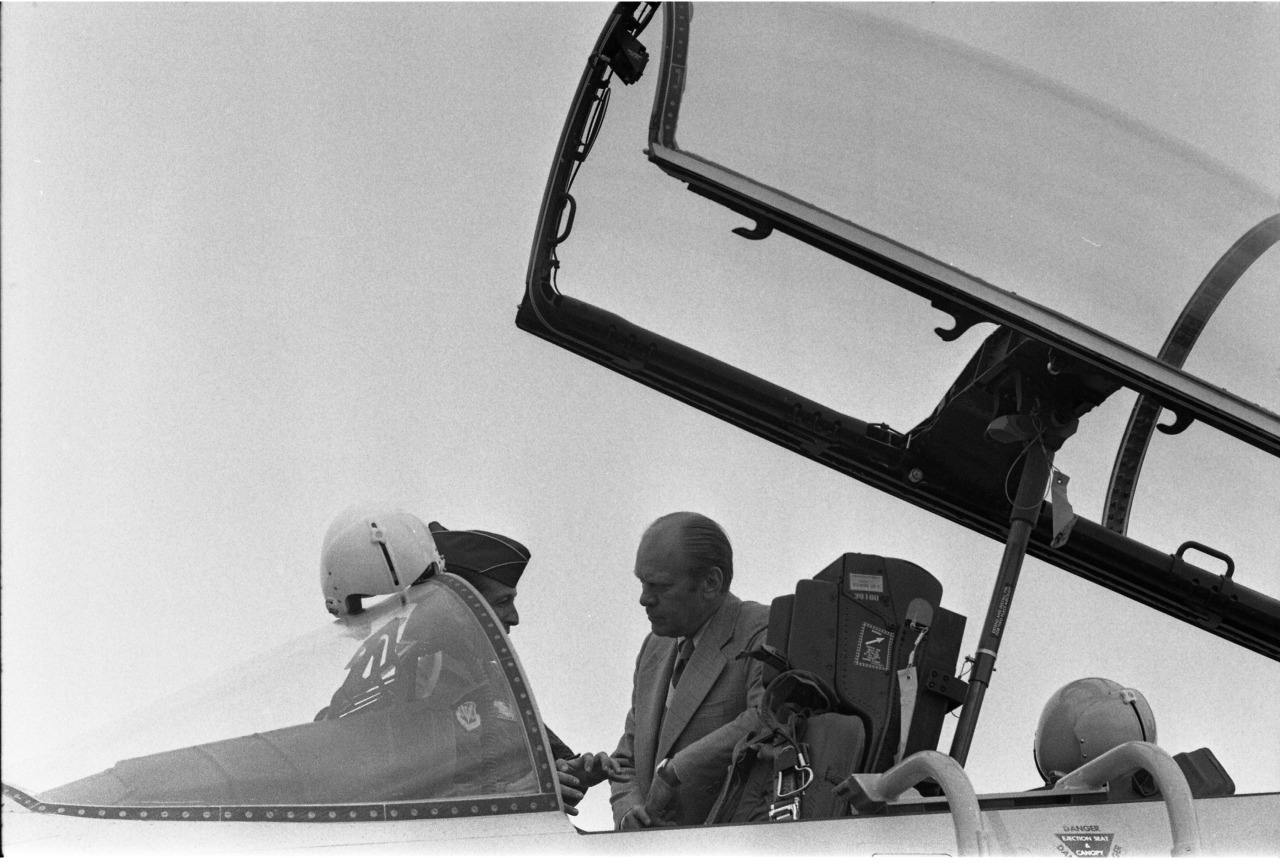

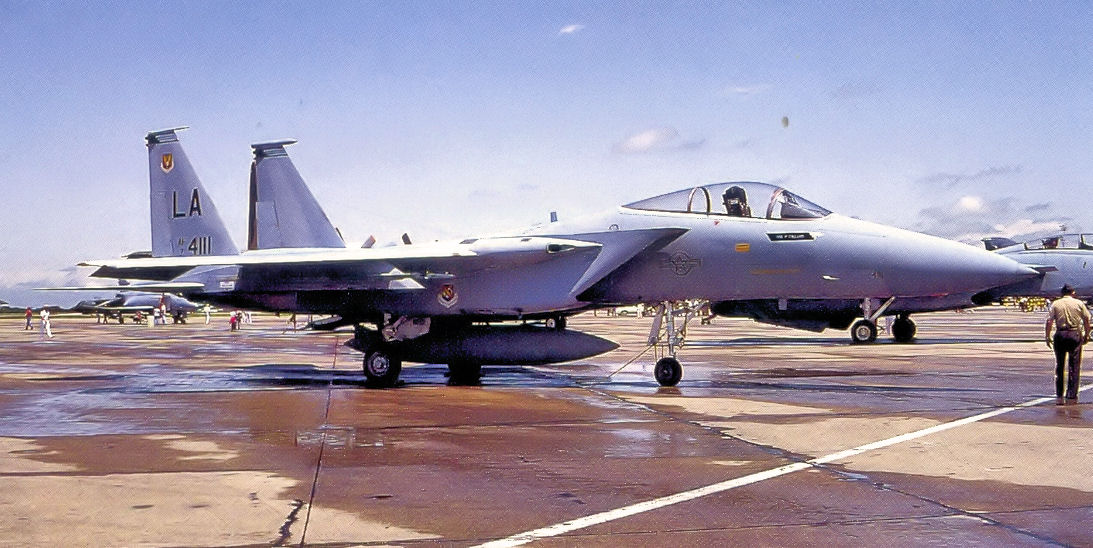

The cruise speed of the F-15A Eagle is 502 knots (578 miles per hour/930 kilometers per hour). It has a maximum speed of 893 knots (1,028 miles per hour/1,654 kilometers per hour) at 10,000 feet (3,048 meters), and 1,434 knots (1,650 miles per hour/2,656 kilometers per hour) at 45,000 feet (13,716 meters). The ceiling is 63,050 feet (19,218 meters) at maximum power. It can climb at an initial 67,250 feet per minute (342 meters per second) from Sea Level, and with a thrust-to-weight ratio of 1.15:1, The F-15 can climb straight up. The Eagle’s combat radius is 638 nautical miles (734 statute miles/1,182kilometers).
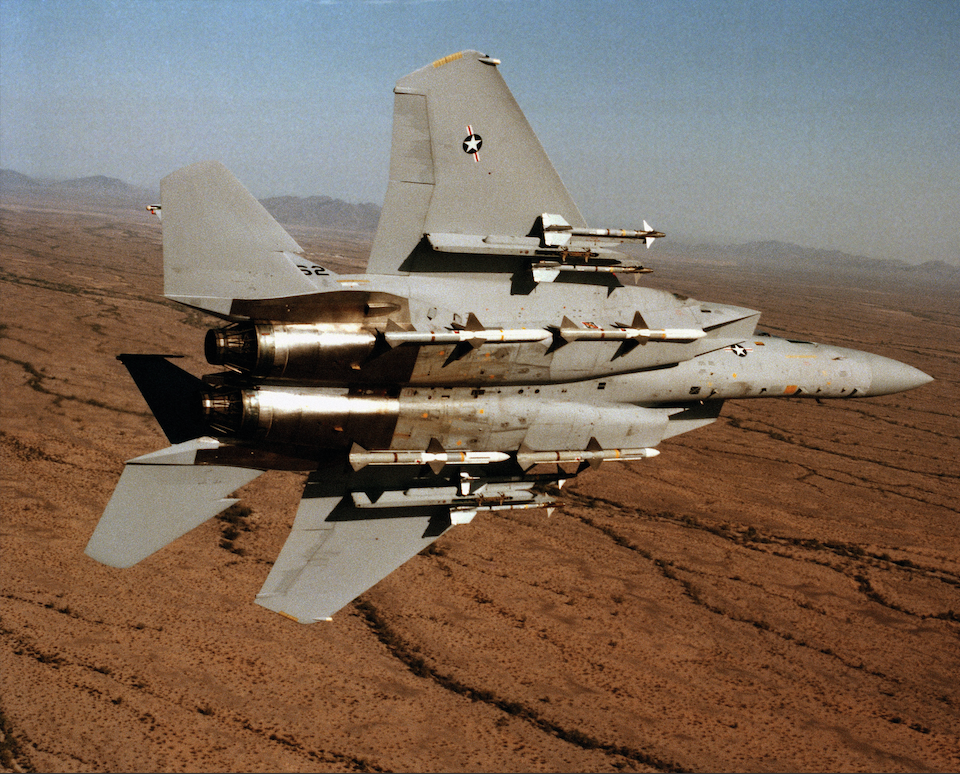
The F-15A is armed with one General Electric M61A1 Vulcan 20mm rotary cannon with 938 rounds of ammunition, four AIM-7F Sparrow radar-guided missiles and four AIM-9 Sidewinder heat-seeking missiles. The fighter can also be armed with a Mk.82 500-pound or Mk. 84 2,000-pound bombs.
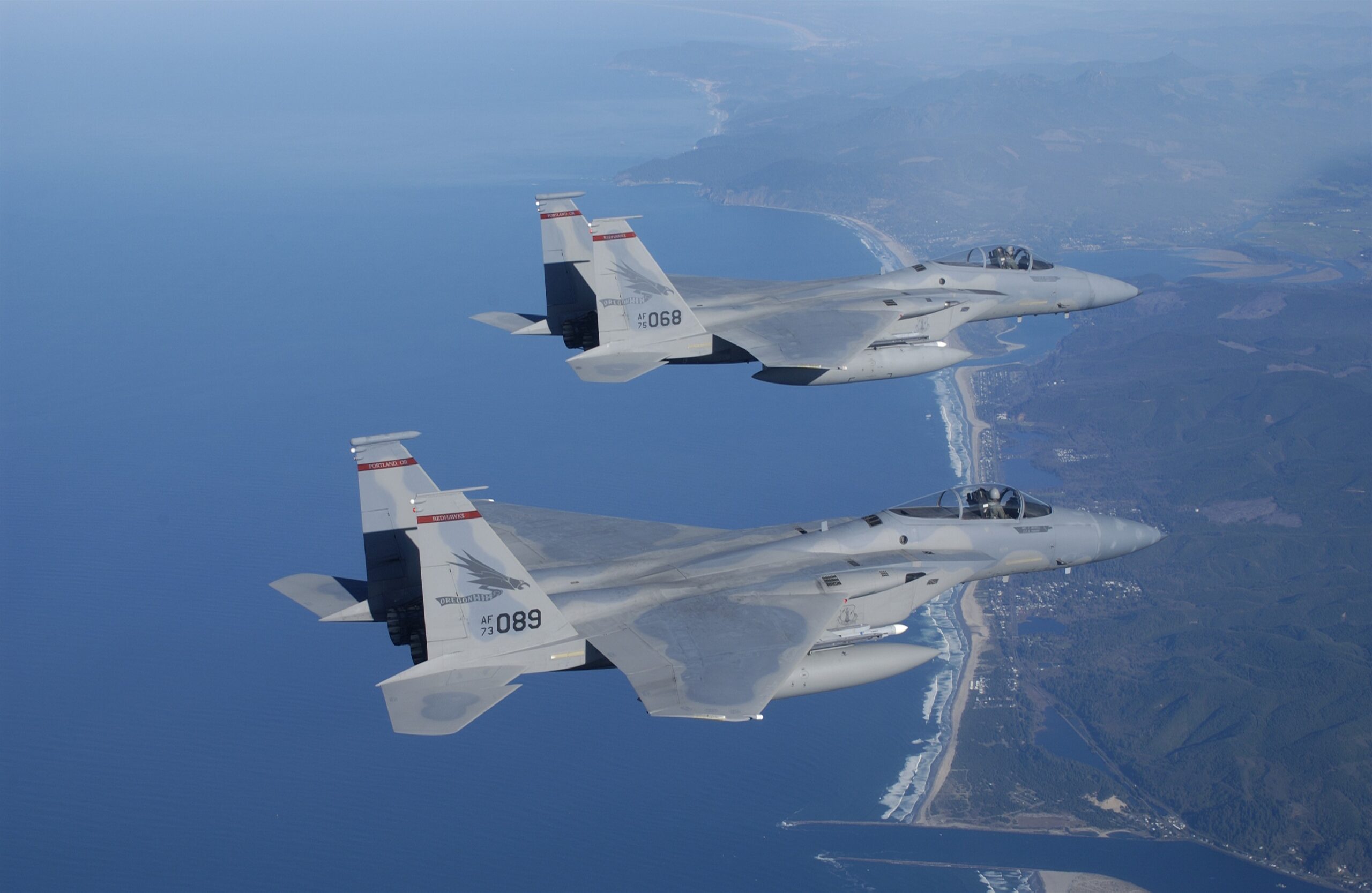
384 F-15A Eagles were built before production shifted to the improved F-15C version. As F-15Cs became operational, the F-15As were transferred to Air National Guard units assigned to defend U.S. continental airspace. The last F-15A was retired from service in 2009.
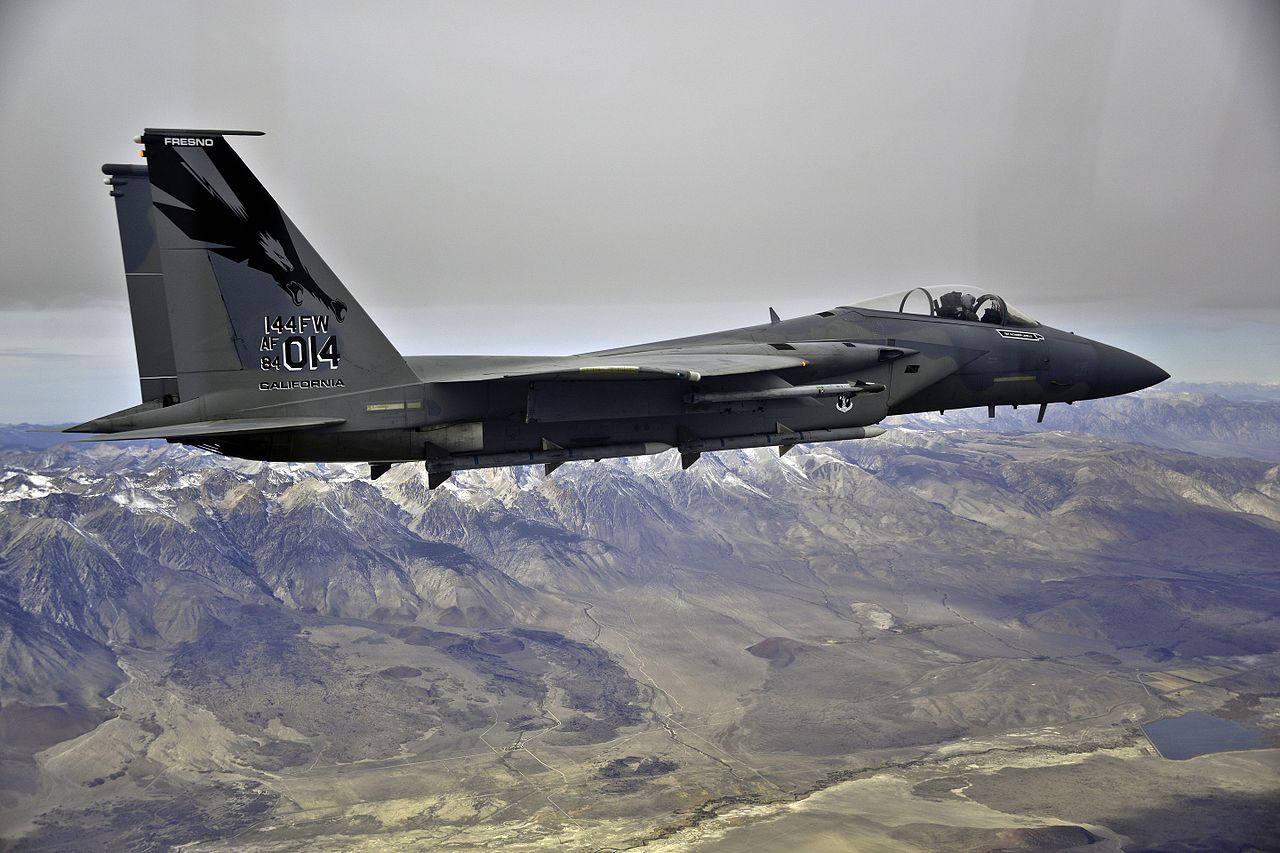
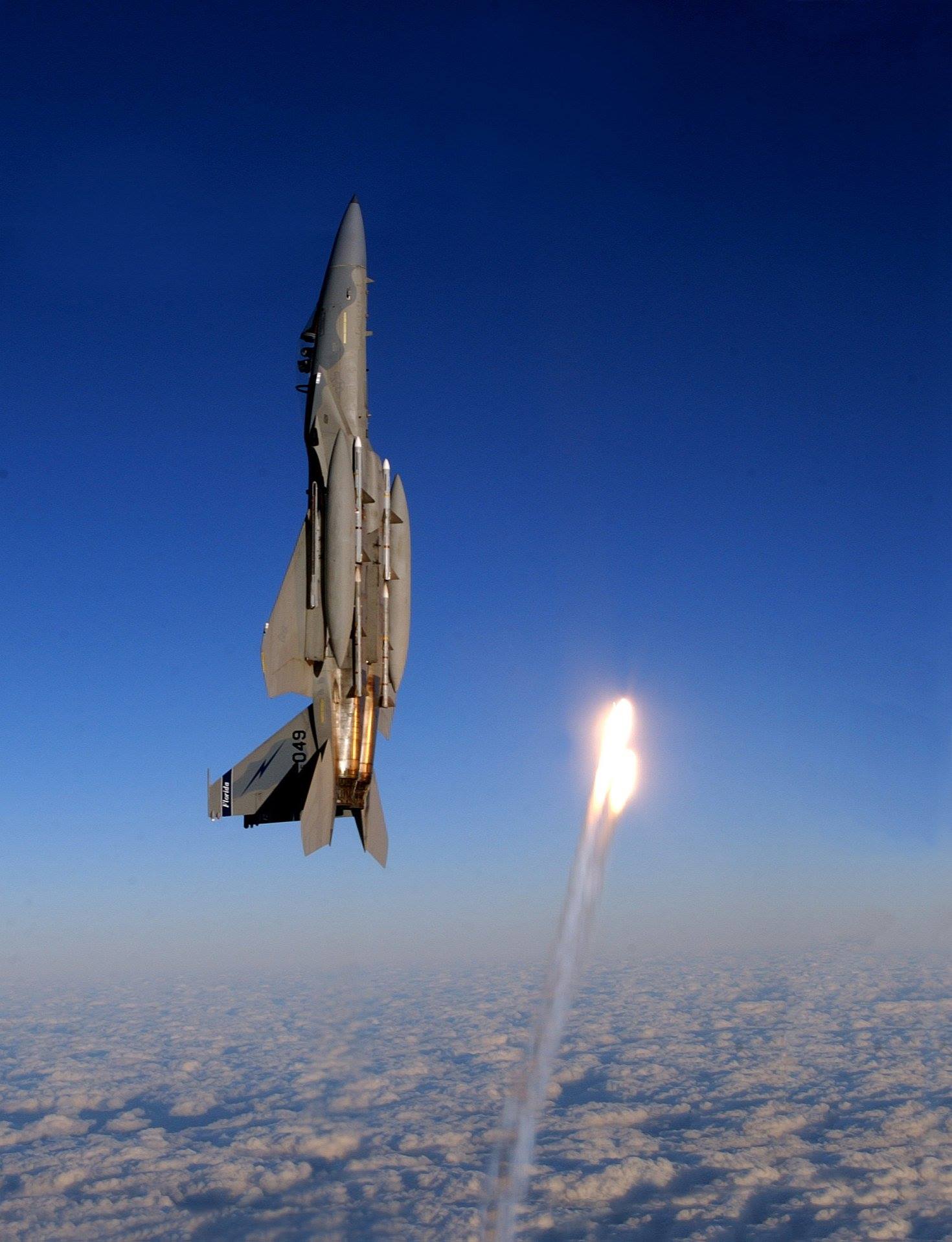
© 2019, Bryan R. Swopes
ersion. As F-15Cs became operation, th
operational
Eric, your comment was garbled. Can you repeat?
Dear Bryan,
can you tell what is in the background of the last picture? Like a rocket?
Those are high-intensity flares, used to draw heat-seeking missiles away from the aircraft.
So the pilot fired these just to make the picture more impressive? 🙂
For the photograph, yes, I believe so. I doubt that there were any Vympel R-73s chasing him at the time.